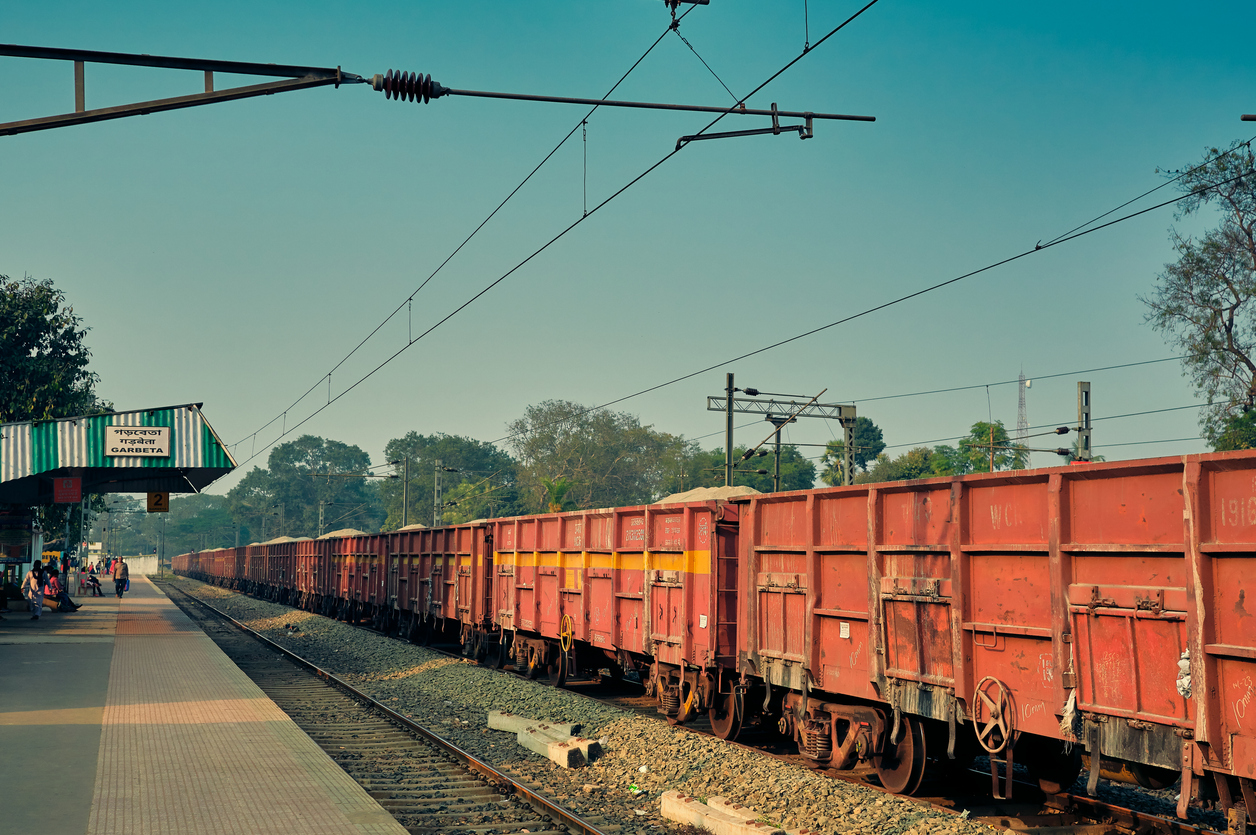Mineral-rich areas of Bihar and MP were carved out as separate states in the name of sub-nationalist pride to weaken the voice of royalty.

Representational image. (iStock)
The policies of freight equalization to tax equalization, i.e., Goods and Services Tax (GST), kept mineral-rich eastern states merely as consumer markets for merchant capital turned industrial capital since independence, which was the legacy of British merchant capital during colonial rule.
The freight equalization policy, adopted by the Union government in 1952, remained in force until 1993 to facilitate industrialization throughout the country through subsidized transportation of minerals.
It implied that industrialists used to get raw minerals, such as coal, iron ore, aluminium, bauxite, limestone, mica, etc., at the same price they could get in mineral-rich states. This policy not only took away the competitive advantage of rich mineral states but also disincentivized private capital to invest in mineral-rich eastern states, such as West Bengal, Assam, Bihar, Jharkhand, Odisha, Madhya Pradesh and Chhattisgarh.
The disincentive was because of the subsidized transportation of unprocessed minerals to infrastructurally comfortable coastal states and market cities of preferred locations of the country, such as Mumbai and Pune in Maharashtra, Ahmedabad in Gujarat, Chennai in Tamil Nadu, Bengaluru in Karnataka, Hyderabad in Andhra Pradesh and Delhi. As a result, most industries were set up outside the mineral-rich states, which acted as a drag on industrialization in mineral-rich eastern states.
This policy had cascading adverse effects on the overall development of mineral-rich eastern states regarding investment in infrastructure, governance, employment, income and social development. During the economic reforms policy regime, i.e., liberalization, privatization and globalization, a new paradigm of development assumed an open market system with less governance away from inspector raj or licence regime, which went against less privileged states having weak infrastructure and less competitive advantages and therefore, less level playing for the open market system.
However, the question of mineral royalty was also raised in combined Bihar in the 1990s. This was the time, through reforms when the market had to come forward with a human face. In a true sense, markets have profitability as the only motive; they can hardly have a human face if one does not have purchasing power.
Purchasing power comes from earnings, and employment opportunities contracted unprecedently during reforms. Moreover, mineral-rich states, such as Bihar and Madhya Pradesh, were divided to carve out mineral-rich areas as separate states in the name of sub-nationalist pride (i.e., Jharkhand and Chhattisgarh, respectively) to weaken the voice of royalty. Subsequently, the minerals were handed over to private capitals.
Needless to say, historically, coastal India was the first market of the British merchant capital during colonial rule until the Sepoy Mutiny against the use of bio-cartilage in 1857, when the Indian army seized Balia.
The Sepoy Mutiny compelled the British to bring rail for twin purposes—one, to immediately reach the British army at the place of disturbances, and two, to carry raw materials from beyond coastal India to feed British industrialization and sell the finished goods to Indian markets.
Heavy taxation on cottage industries and their products further aggravated the process of deindustrialization in India. Hence, coastal India developed and remained the hub of the British merchant capital. Freight equalization after independence provided a competitive advantage for merchant capital in a few coastal pockets of the country at the cost of mineral-rich states.
Gandhiji’s warning against the uncritical adoption of the Western frame of industrialism, which survives on exploiting races and places, remained a cry in the wild forest. Lohia also advocated further against imperialism, which very much exists in the embryo of capitalism but remained unheard by the deaf ear of Indian polity.
The latest policies of the present dispensation, such as demonetization in 2016, Goods and Services Tax (GST) in 2017 and sudden lockdown in 2021, have caused a clinical catastrophe to the Indian economy. Tax equalization through GST has aggravated the process of deindustrialization of mineral-rich eastern states.
These backward states lost their last hope and industrialization opportunities, as the private capital had hardly any incentive to invest in them. These states had already lost their chance for industrialization because of freight equalization and economic reforms.
Public investment through state transfers has also not been generous in catering to the states’ special needs objectively away from the political gains. States receive funds from the Union Government through tax shares, grants in aid, and loans.
Under Article 280 of the Constitution, the President constitutes the Finance Commission to recommend the modalities for the devolution of funds between the Union government and the states for the next five years. Based on its recommendations, the Centre transfers the defined share of tax revenues to the states. The Union government also provides grants in aid to states for development schemes under Article 282.
Tax devolution remained quite below the recommendations of the 15th Finance Commission. In 2019 it was 42.7 percent, which fell to 38.1 percent in 2020 and further declined to 36.6 percent in 2021. However, this share of the divisible pool increased to 40.3 percent in 2022. However, it declined to 37.4 percent in revised estimates for 2023 and 36.5 percent in budgeted estimates for 2024.
The 15th Finance Commission highlighted the problematic nature of the growing share of cesses and surcharges in Union revenues. The divisible pool, as a percentage of the gross revenues of the Union, has been consistently falling as more and more resources are raised through non-shareable cesses and surcharges.
Thus, a saga of the declining share of resources, earlier through freight equalization and later through reforms policies added with tax equalization through GST, further aggravated the resource strain. Consequently, the backward states have been lagging regarding social development indicators. Special packages to these states are the only way out if they have to be lifted from the quagmire of underdevelopment.
(The writer is a former Director and Professor of Economics at A. N. Sinha Institute of Social Studies, Patna, currently associated with Development Research Institute, Bihar. Views are personal.)